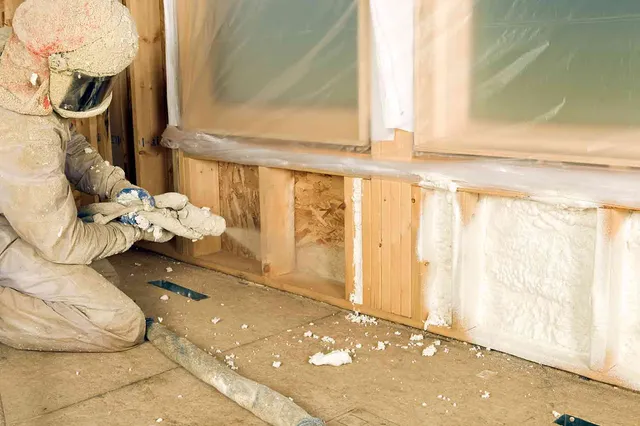
Lead hazards remain a serious concern in many older homes and workplaces. Exposure to lead, especially through deteriorating paint or contaminated dust, poses significant health risks. Fortunately, lead abatement Phoenix AZ is an effective solution to create safer environments by addressing and eliminating these dangers.
In this complete guide, we’ll explore everything you need to know about lead abatement, including how it differs from lead paint removal, the methods used in lead removal, and why professional intervention is critical. Whether you’re a homeowner, landlord, or business owner, understanding lead abatement is essential for protecting health and complying with regulations.
What Exactly Is Lead Abatement?
How Is Lead Abatement Different from Lead Paint Removal?
While often used interchangeably, lead abatement is a broader term encompassing all processes that permanently reduce or eliminate lead hazards in a building. This includes lead paint removal, but also involves:
• Encapsulating or sealing lead-painted surfaces
• Replacing lead-contaminated components (e.g., windows, doors)
• Cleaning or removing lead-contaminated dust and soil
In contrast, lead paint removal refers specifically to the removal or covering of lead-based paint. It’s a critical part of abatement but not the entire process.
Why Is Lead Abatement Crucial for Health and Safety?
What Are the Risks of Lead Exposure?
Lead is a toxic metal that can cause severe health problems, especially in children and pregnant women. Common exposure sources include:
• Flaking or chipping lead paint in older buildings
• Lead dust generated during renovations or repairs
• Contaminated soil near homes or workplaces
Health effects of lead exposure can be serious and irreversible:
• Cognitive impairment and learning disabilities in children
• Behavioral problems and developmental delays
• Cardiovascular and kidney issues in adults
• High levels can cause seizures, coma, or death
Because of these dangers, the EPA and OSHA enforce strict guidelines requiring lead abatement in affected environments.
When Should You Consider Lead Abatement?
Are You at Risk?
If your property was built before 1978, it’s likely to contain lead-based paint. Signs that you may need lead abatement include:
• Visible peeling or chipping paint
• Dust or debris with a metallic taste or grayish appearance
• Renovation activities disturbing painted surfaces
• A child or employee diagnosed with elevated blood lead levels
Getting a professional lead inspection or risk assessment is the best way to determine whether abatement is necessary.
What Are the Common Lead Removal Methods Used in Abatement?
How Do Professionals Perform Lead Paint Removal and Other Lead Abatement Tasks?
There are several approaches to lead removal and abatement, including:
• Chemical Stripping: Using solvents to dissolve lead paint safely for removal.
• Wet Scraping and Sanding: Minimizes airborne lead dust but requires strict controls.
• Heat Gun Removal: Softens paint for scraping but must be done below hazardous temperatures.
• Encapsulation: Applying a special coating to seal lead paint rather than removing it.
• Replacement: Removing and replacing lead-painted elements like windows, doors, and trim.
• Soil Removal: Excavating contaminated soil and replacing it with clean material.
The best method depends on the property’s condition, extent of contamination, and budget considerations.
What Makes Professional Lead Abatement Essential?
Why Should You Avoid DIY Lead Paint Removal?
Attempting lead removal or abatement without proper training can be dangerous and ineffective. Certified professionals offer:
• Proper containment and disposal of lead waste
• Use of specialized equipment to reduce lead dust and fumes
• Compliance with local, state, and federal regulations (EPA, OSHA, HUD)
• Post-abatement clearance testing to ensure safety
• Peace of mind knowing the work is thorough and safe
Improper DIY methods risk spreading lead dust, increasing health hazards rather than reducing them.
How Can You Prepare Your Home or Workplace for Lead Abatement?
Tips for a Smooth and Safe Abatement Process
• Notify Occupants: Inform family members or employees about the timeline and safety precautions.
• Clear the Area: Remove furniture, personal belongings, and pets from work zones.
• Plan Temporary Relocation: In some cases, it’s safest to stay elsewhere during abatement.
• Follow Safety Instructions: Avoid entering work areas and follow all protective measures.
• Arrange Post-Abatement Testing: Confirm the space is lead-safe before resuming normal use.
Preparation helps minimize disruption and ensures everyone stays safe during the project.
Can Lead Abatement Increase Property Value?
Is Investing in Lead Abatement Financially Beneficial?
Absolutely. Beyond health benefits, lead abatement can:
• Make properties compliant with safety regulations, facilitating sales or rentals.
• Improve marketability by assuring buyers or tenants the space is safe.
• Prevent costly future renovations or legal liabilities due to lead hazards.
• Increase peace of mind for occupants and owners.
In many markets, a lead-safe certification adds credibility and value to your property.
Conclusion
Lead hazards pose real, significant threats to health and safety in both homes and workplaces. Understanding lead abatement and how it differs from just lead paint removal is critical for anyone managing older buildings or conducting renovations.
Professional lead removal Scottsdale AZ and abatement ensure a comprehensive, safe approach that protects occupants, complies with regulations, and can even increase property value. If your property shows signs of lead or you suspect contamination, act promptly by scheduling inspections and partnering with certified abatement specialists.
Taking the lead on lead abatement is not just a regulatory obligation—it’s a proactive investment in the health, safety, and future of your home or workplace.

